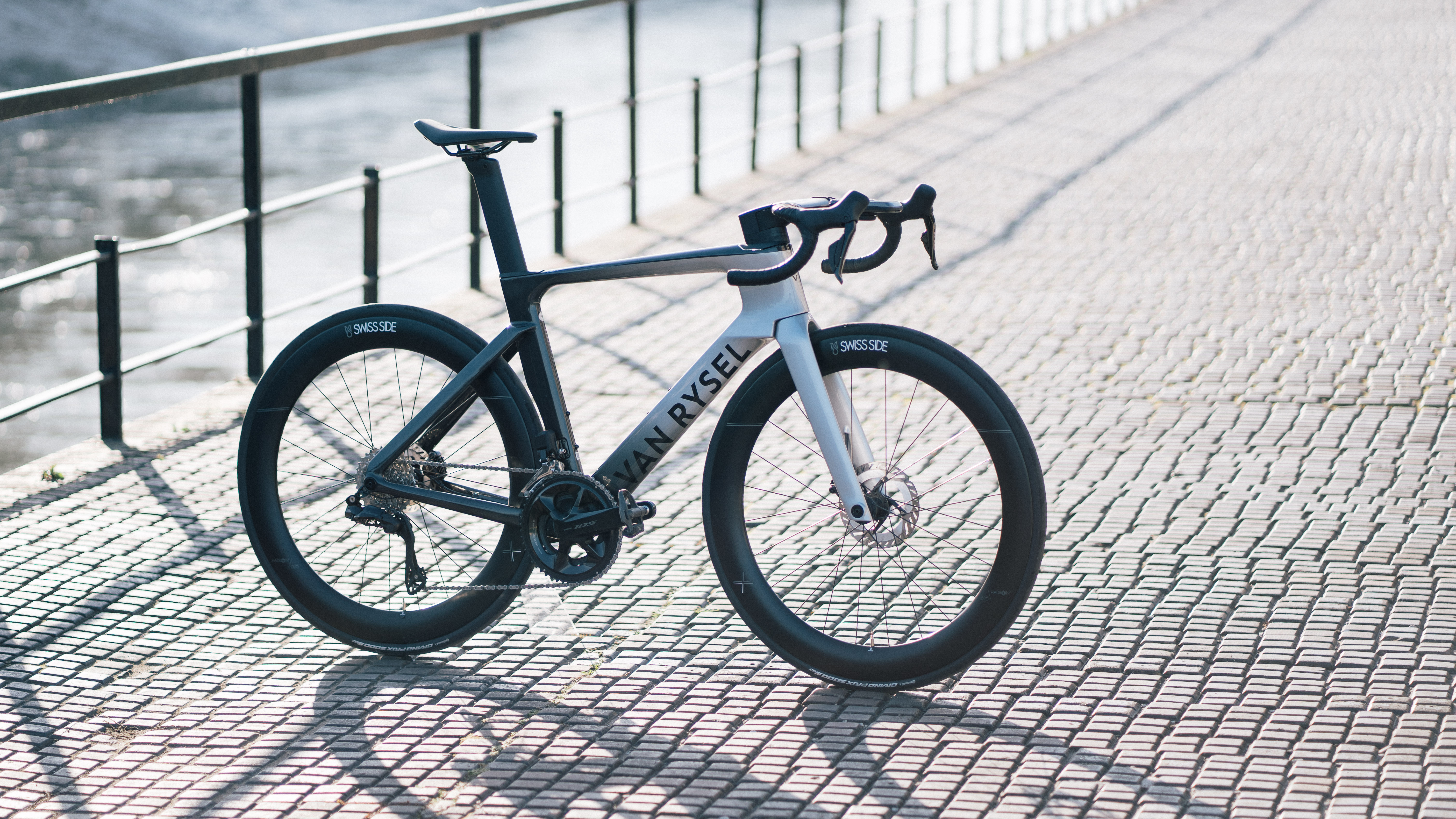
Price: €5,499 / £5,000
Weight: 8.53kg/18.8lbs (56)
Sizes: XXS-XL
Groupset: Shimano 105 Di2
Colours: Flow Grey
In brand terms, the rise of Van Rysel from value-oriented own-brand also-ran to a fully fledged performance outfit, outwardly untethered from its Decathlon ownership, has been pretty meteoric. In the last three years, it’s gone from a standing start to sponsoring a WorldTour squad and has just rolled out a second top-end road bike in as many years.
We have seen the RCR-F (F for Fast, to distinguish it from the lighter RCR Pro) in use as far back as the 2024 Tour de France, and it’s been in use at Opening Weekend in addition to other early season races. It is an out-and-out aero bike, picking up the industry swing of the pendulum as it falls away from ‘one bike to rule them all’ back to ‘light bike and aero bike’. Is it one of the best aero road bikes on the market? Well we haven't taken it to the wind tunnel yet, but it certainly has the potential to be.
I’ve had the pleasure of testing the brand new Van Rysel RCR-F before the launch, clocking up 500km in a two week period including a 200km ride to see what it can handle. Luckily for you, I also reviewed the Van Rysel RCR last year, and so am perfectly placed to compare and contrast the two. The top line is that I think the RCR-F is a better bike. It feels better executed, better specced, more considered, but the front end of the bike is so low that I think it’s going to alienate potential customers and confine it to the professional ranks only, which is a shame.
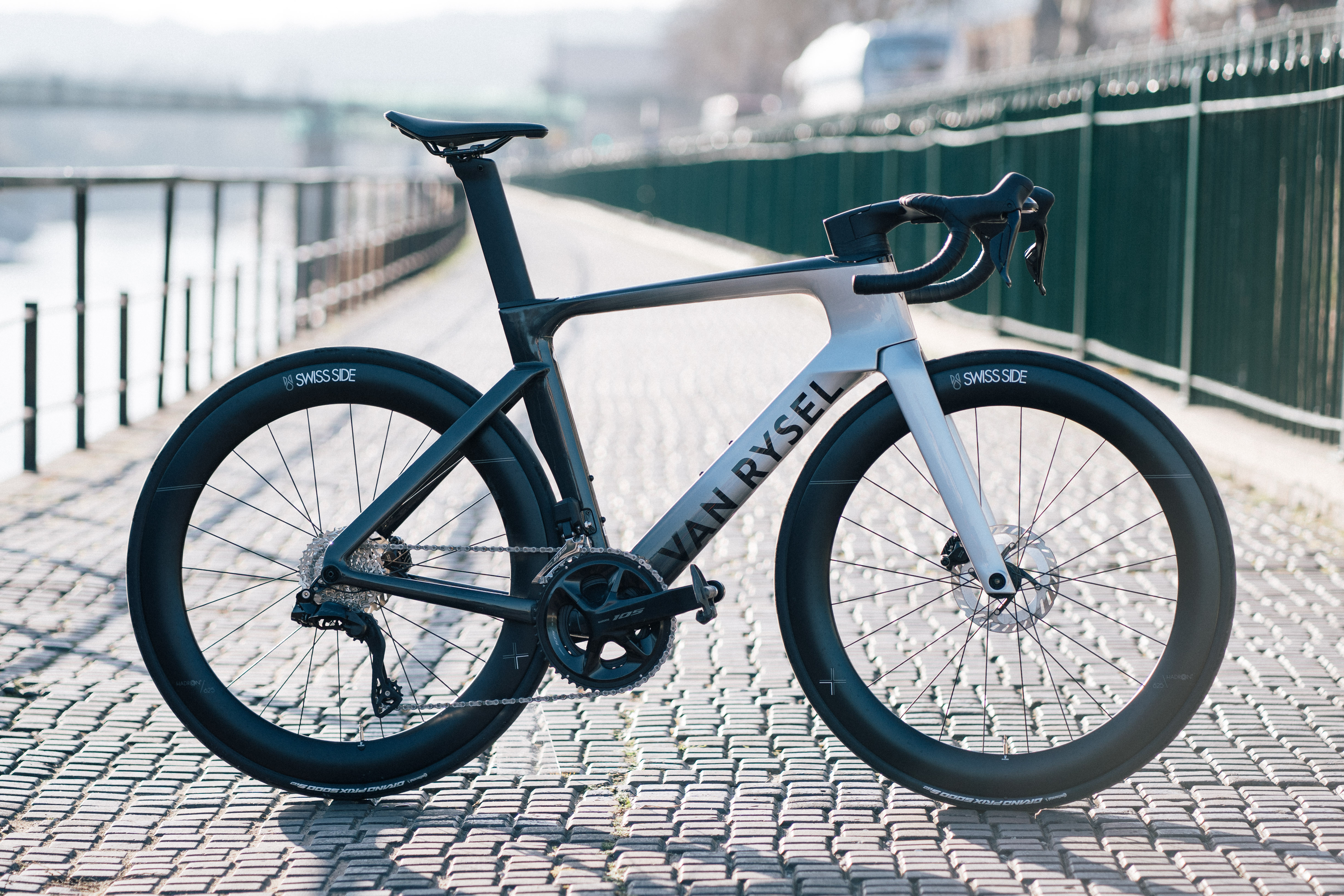
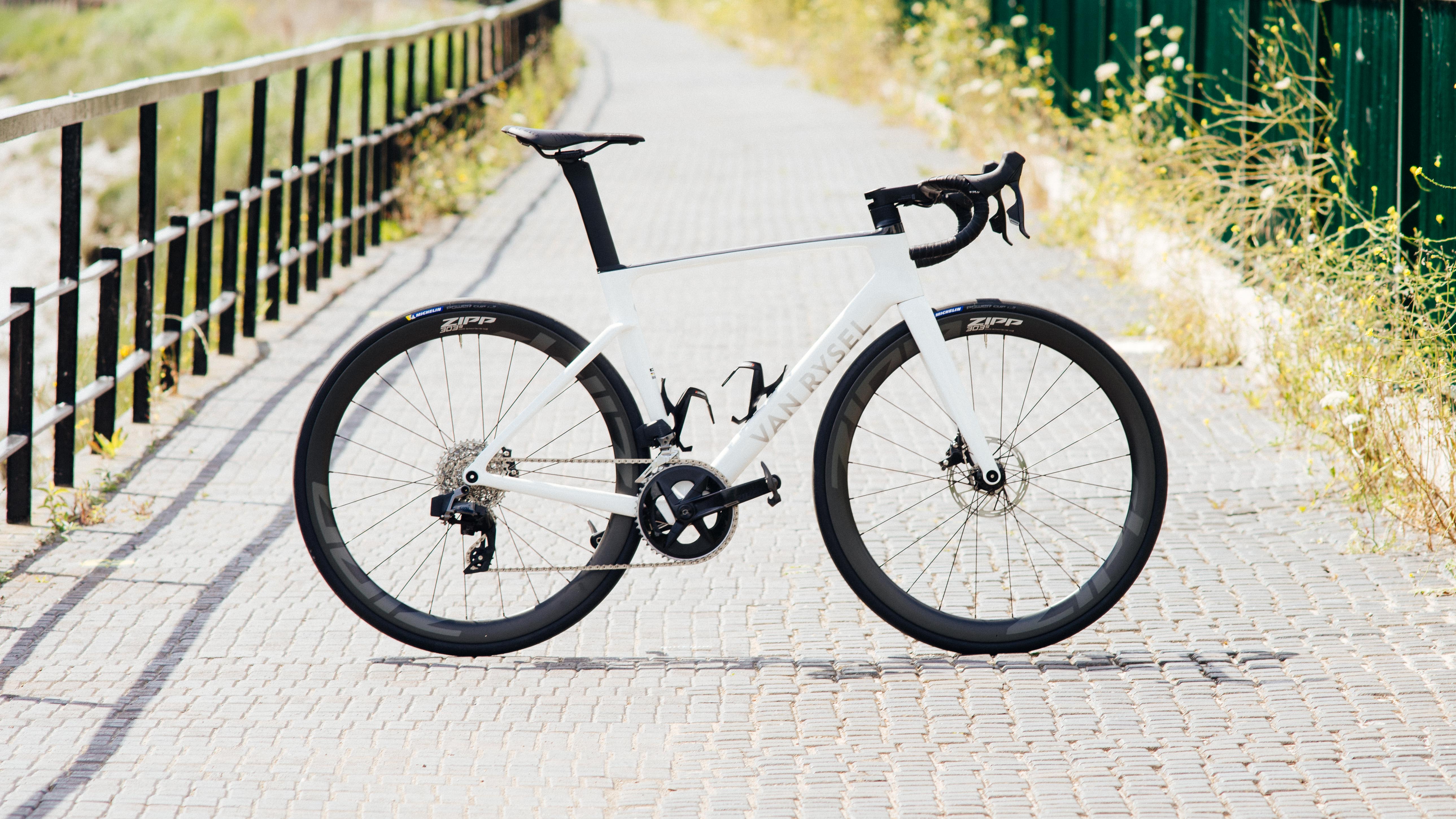
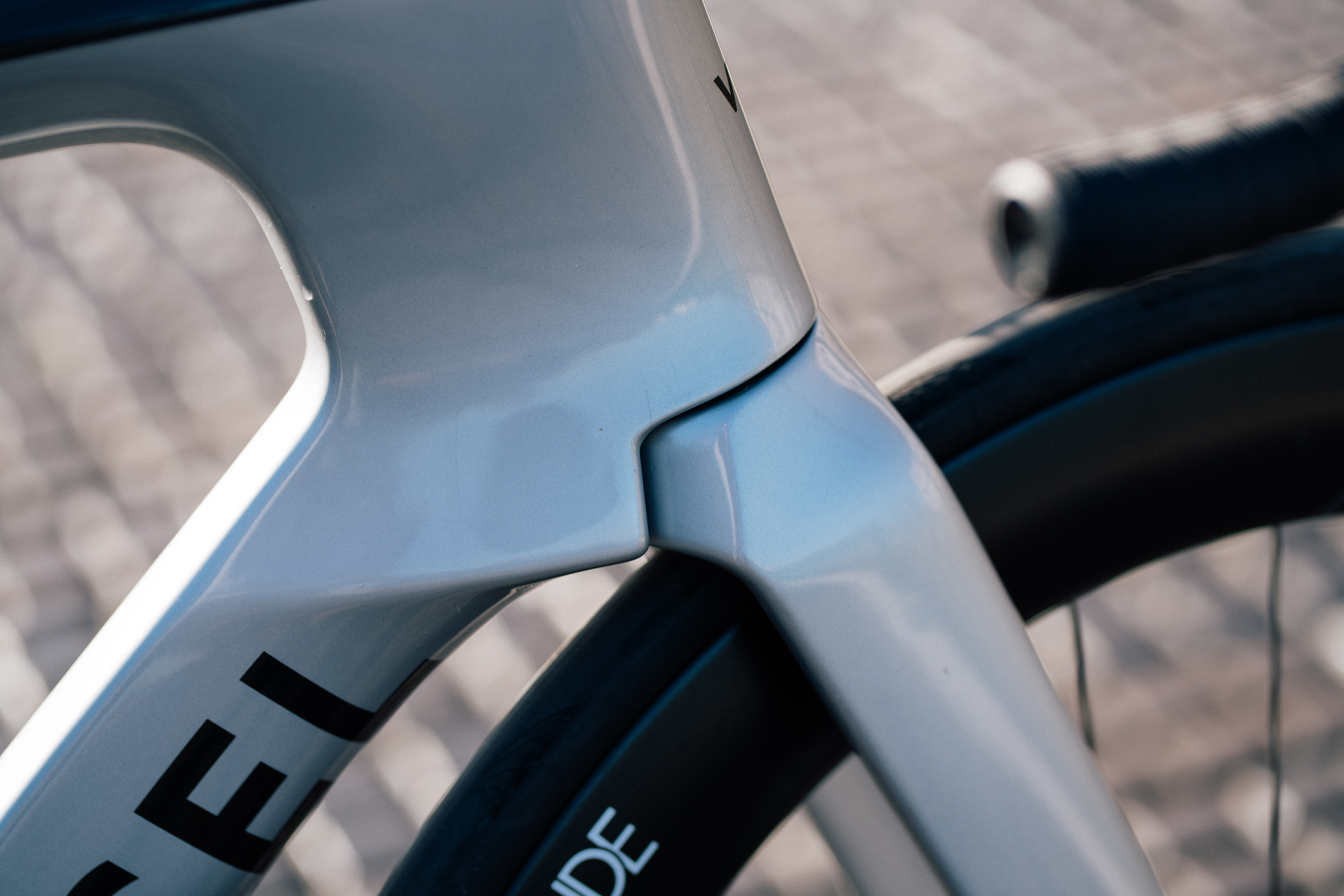
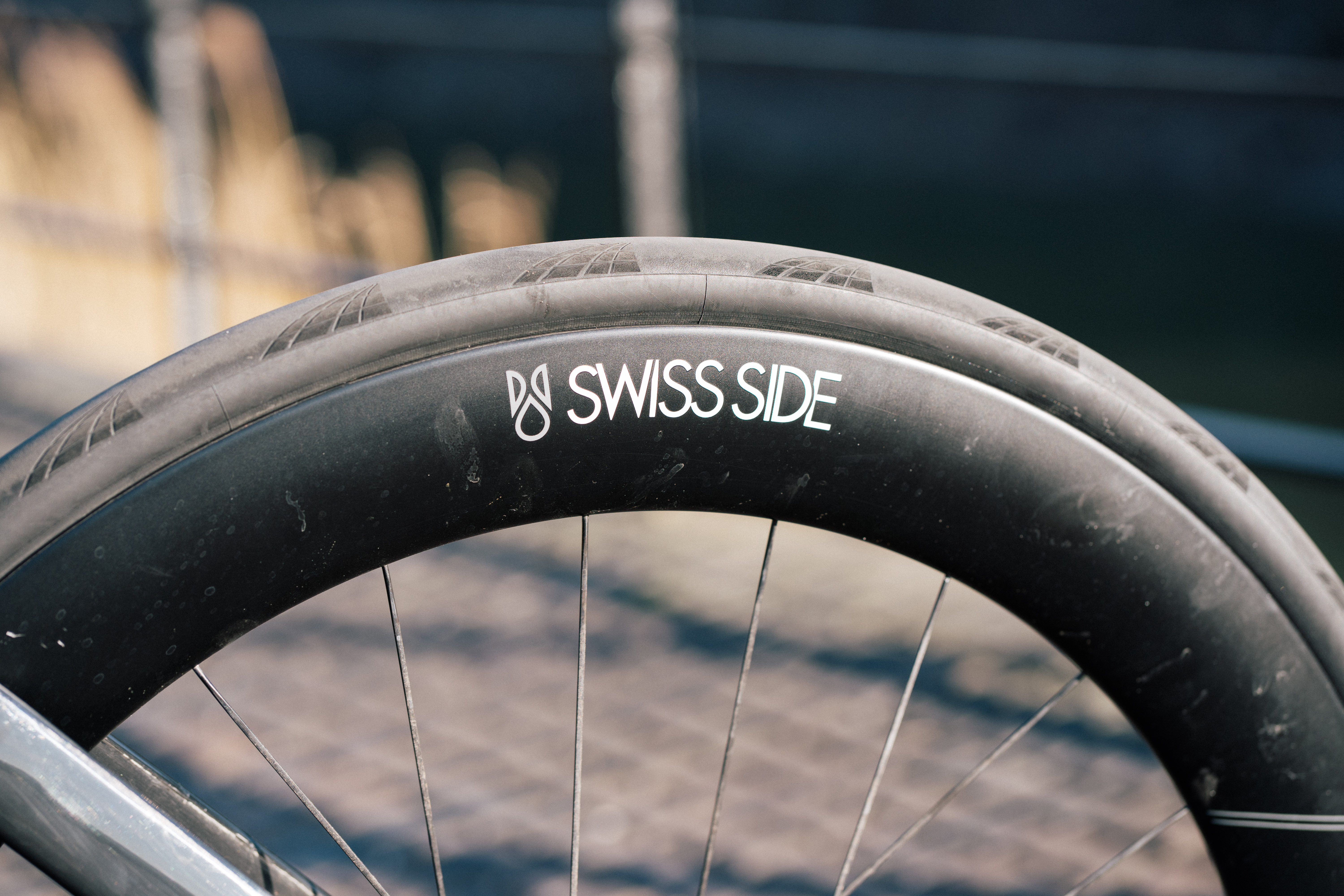
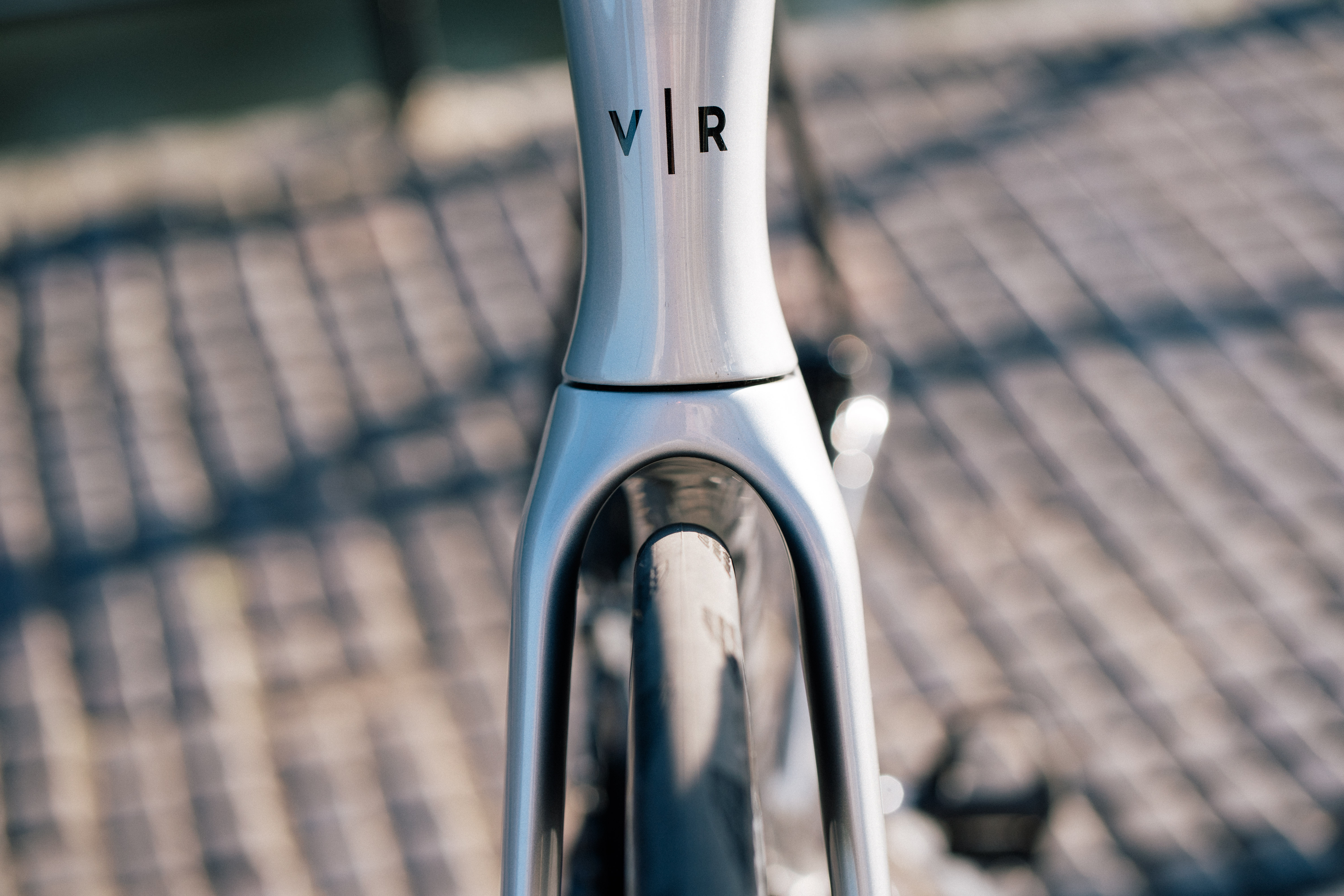
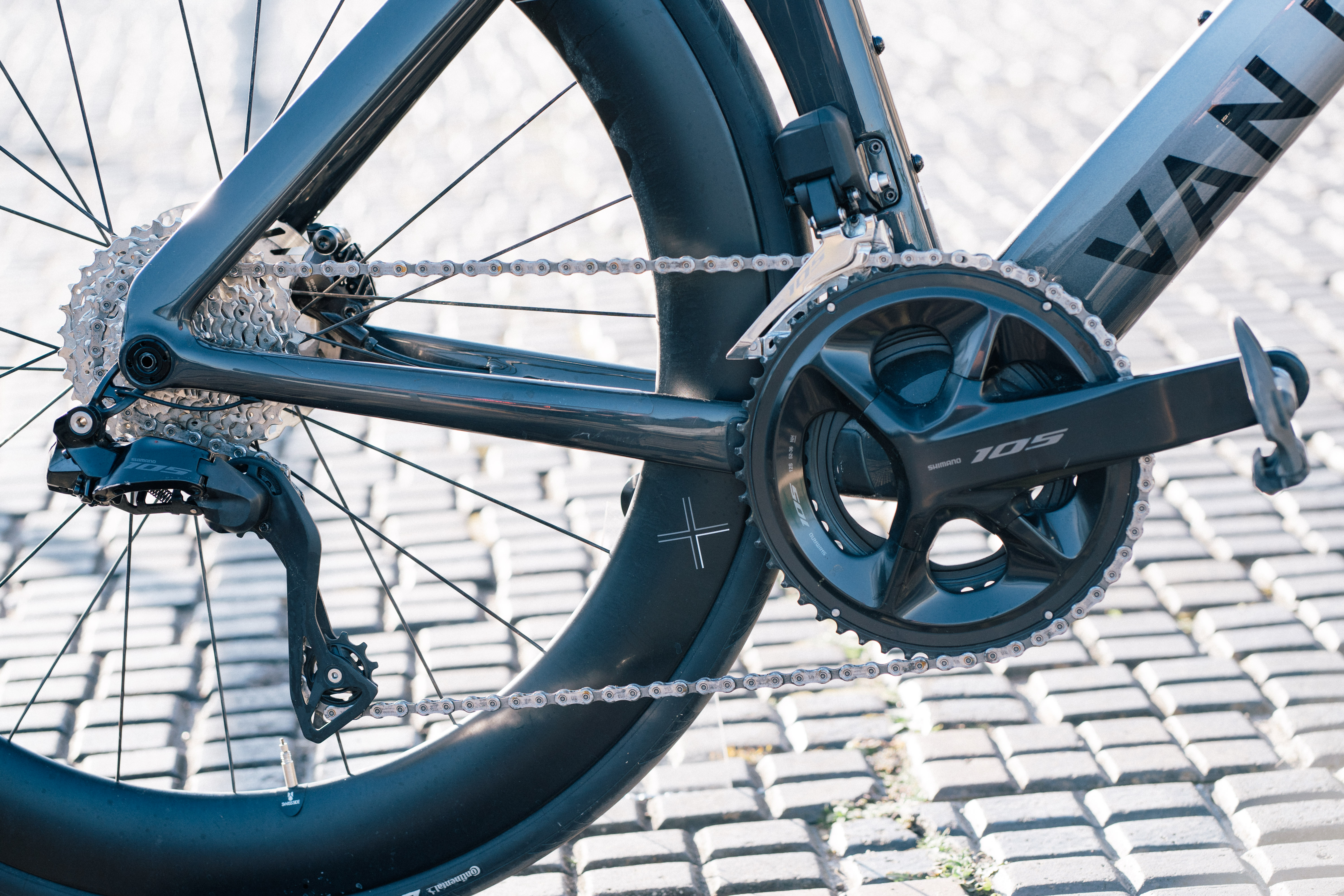
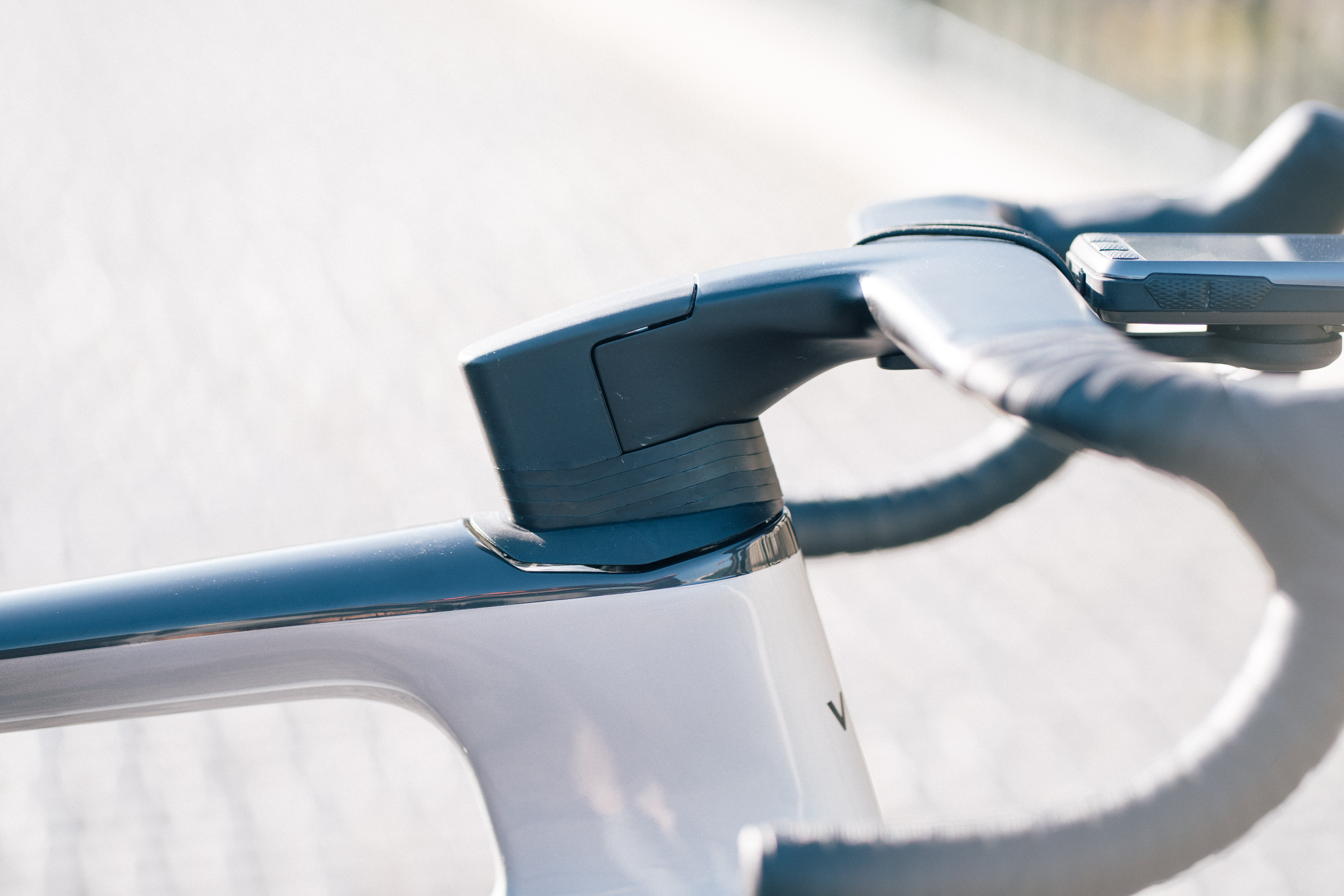
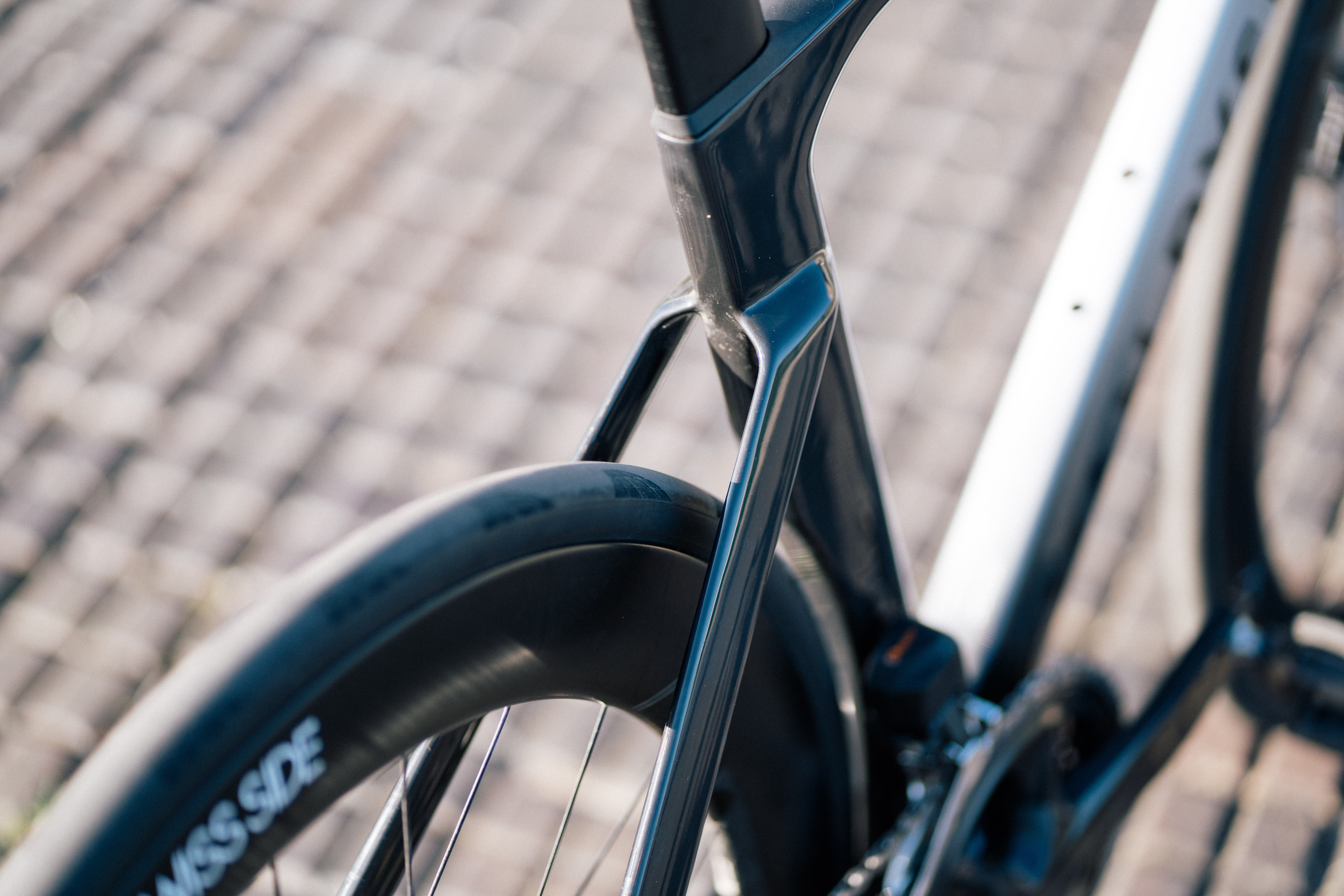
Design and aesthetics
The easiest way to describe the design of the Van Rysel RCR-F is to say it’s essentially exactly the same as the RCR Pro, except every tube is deeper. This is extremely reductive, but at a glance it certainly gives you a flavour of the intent for each bike. Visually at least the RCR-F has the same stance, the same straight fork legs, the same top tube angle, the same insertion points for the stays. The rear stays are actually the most similar bit to the RCR Pro, and while they are deeper on the RCR-F, they are relatively svelte compared to the monstrous head tube, seat tube, and down tube.
The eye is going to be drawn to that giant head tube initially, and while it is extremely deep I think this is slightly exaggerated by the fact that, in relative terms, it’s a short heat tube too. I’ll dig into the geometry shortly though. The head tube is neatly sculpted into the fork crown, as is the custom nowadays for aero bikes, and the top tube tapers down to a flatter point in a way reminiscent of, but not so extreme as that of the Factor Ostro VAM.
The deep, aero seatpost slots into a correspondingly deep seat tube, which lightly scallops the rear wheel at the lower reaches, and the down tube is just… big. There’s no other way to describe it really. It’s not big by aero bike standards, but there’s a lot of bike there. All of this, in combination with the wide-set stays at the back gives a much more muscular appearance than the RCR Pro, and that lowered head tube combined with a Van Rysel-designed, Deda-manufactured integrated cockpit gives a more racy stance.
All these aero shapings wouldn’t be complete without some manufacturer claims. The head tube is 7% stiffer, and I imagine some of this is down to it just being smaller, and in aero terms, the bike is a claimed 13 watts faster than the RCR Pro. It certainly feels faster, and in my testing, it is objectively a fast bike, but some of that may be an increase in front end stiffness combined with the spec. There’s mention of the benefits being reaped over 35km/h versus the RCR Pro, but it's at 45km/h where the wattage claims are made (without bottles or cages) and once you add a rider onto the bike (which you'll need to do to really feel the benefit) that figure drops to 10 watts.
Speaking of which, you can only have Shimano, and only electric versions too. I tested out the version with 105, but Ultegra and Dura-Ace variants are available. There are no SRAM options yet though, meaning that the bottom end of the range is a little more premium than that of the RCR Pro. This isn’t ideal for consumers looking for cheaper performance bikes, but given the performance leanings of the RCR-F versus the more generalist RCR Pro I think it can be forgiven to some degree. SRAM builds are, I'm told, due in the summer.
The use of a press-fit bottom bracket allows for a wider, stiffer bottom bracket shell, but this seems to be against the run of play in a market moving (thankfully in my opinion) back to threaded bottom brackets.
Geometrically the RCR-F is much the same as the RCR Pro, just with a longer reach (399mm plays 395mm) and a lower stack (551mm plays 572mm). The head tube angle, seat tube angle, bottom bracket drop, chain stay length and fork rake are all identical, though the wheelbase is slightly longer on the RCR-F. This makes sense for a bike with racy ambitions but the stack height is really very, very low, to the point I am concerned it will be unsuitable for many riders.
For context, the stack height (that being the vertical distance from the bottom bracket to the top of the head tube, analogous to how low the front end is) in a size Large (the closest equivalent to a 56) is 14mm lower than the Specialized Tarmac SL8, 19mm lower than the Pinarello Dogma F, and a full 25mm lower than the Cannondale SuperSix Evo. All of these bikes are WorldTour race bikes and offer up pretty aggressive positions. I ran the Dogma for a long period of time with a healthy stack of spacers and that was still a pretty aggressive position to kick about in. I am all for a racy setup, but even with 25mm of spacers above the headset cover it was still comfortably (or not) the lowest I’ve ever run a front end. This is slightly complicated by the fact that I ran a Medium test bike with a top tube length of 55.2cm, whereas I’d normally run a 56, making the front end lower than I am used to compared to the models above.
Is it too low? Not for the pros, who can devote endless hours to strength and conditioning work and even more hours into getting used to such an aggressive setup, but for the consumer… I think it might be. If it’s at the limit of useability for me, someone who tests race bikes as their job, it is very likely that it’s too low for your average consumer, however racy their ambitions.
In a briefing for the associated bike journos we were told that the RCR-F is really only for about 20% of consumers, with the rest being far better catered for by the RCR (Pro, or otherwise). Given Van Rysel's historic reputation for great value, creating a bike that isn't really for most people, and very much catering for the WorldTour feels like a bit of a departure, and I think unnecessarily alienating. Sure, maybe many of the people riding a Pinarello Dogma aren't making the absolute most of it, but at least they can still fit on one.
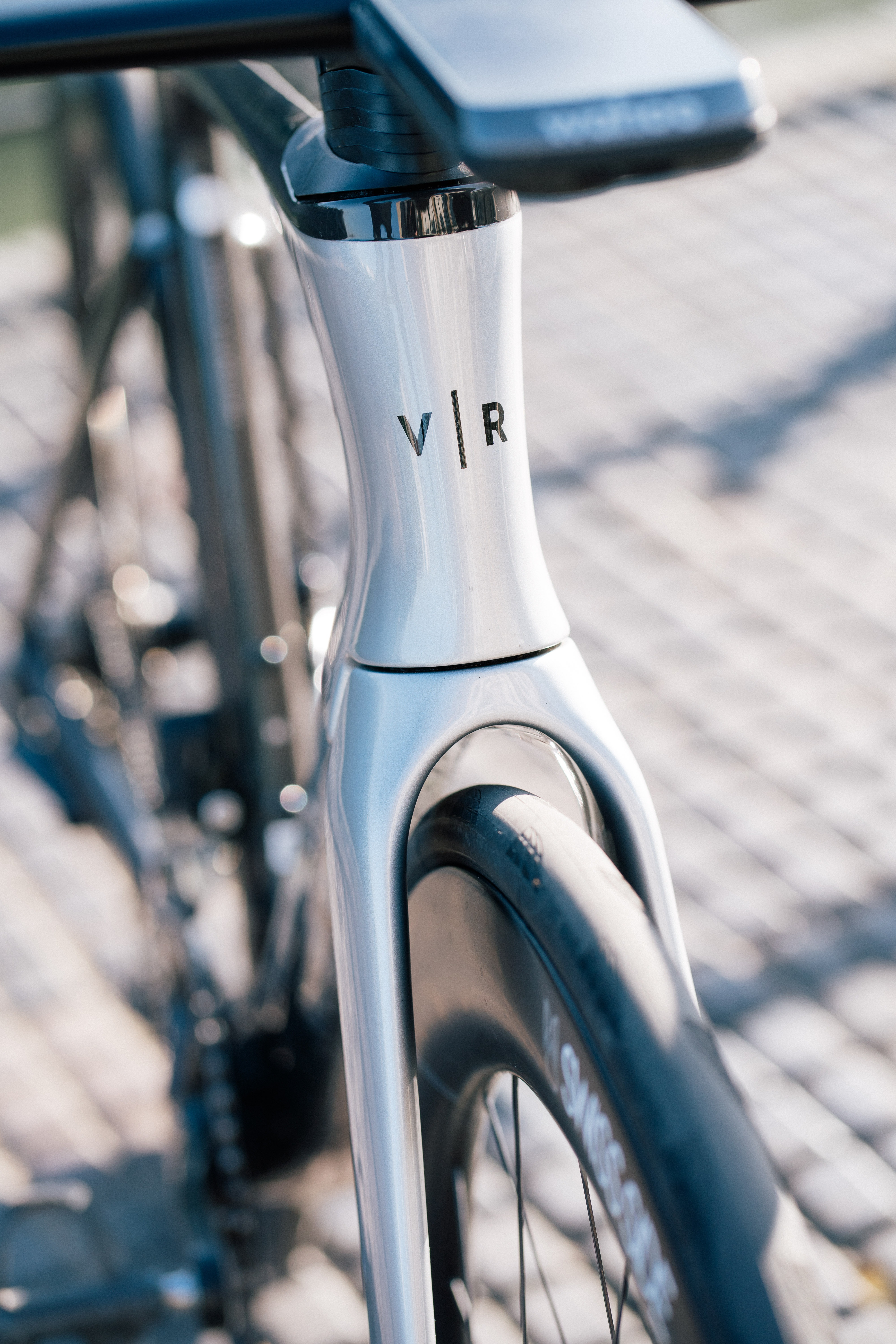
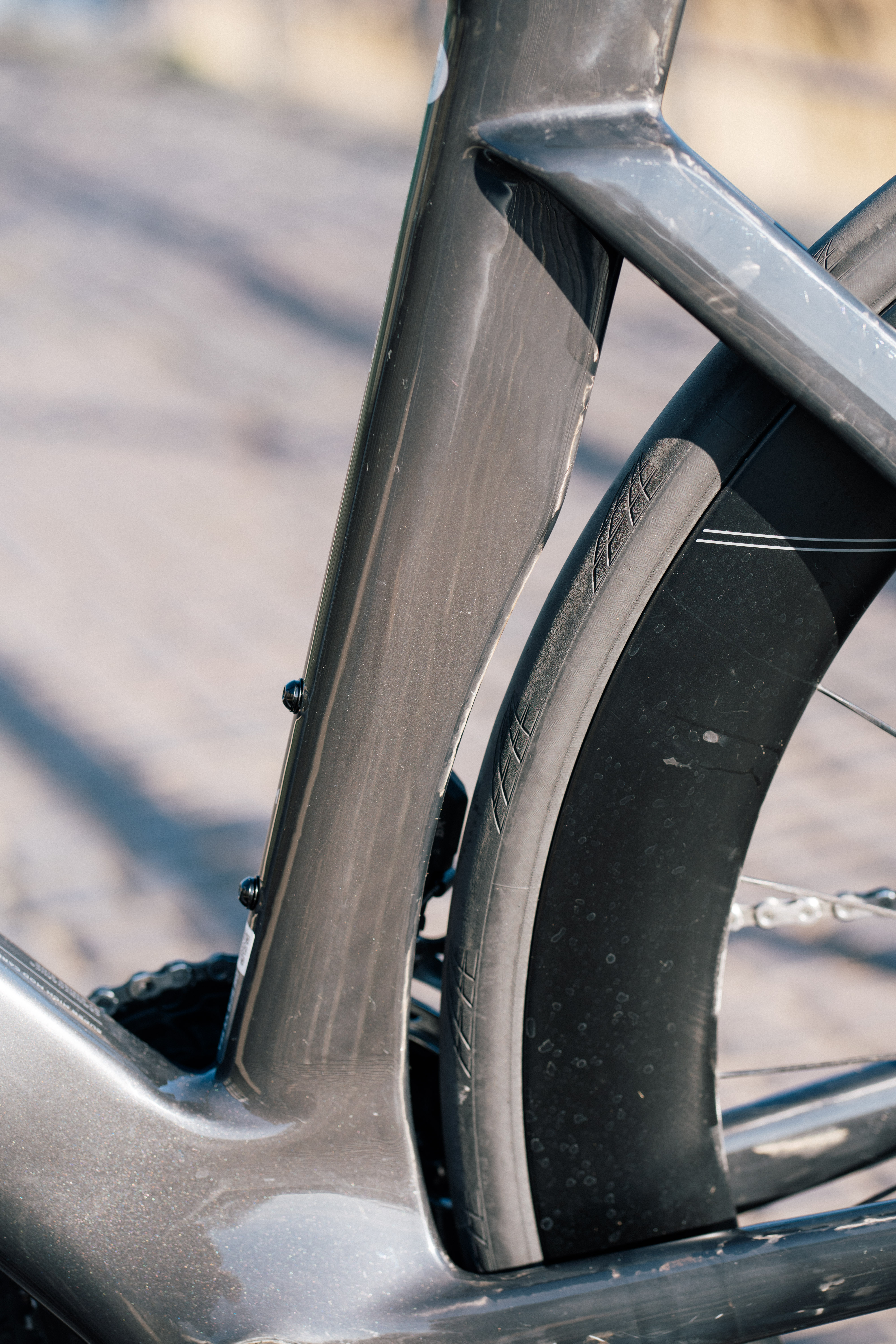
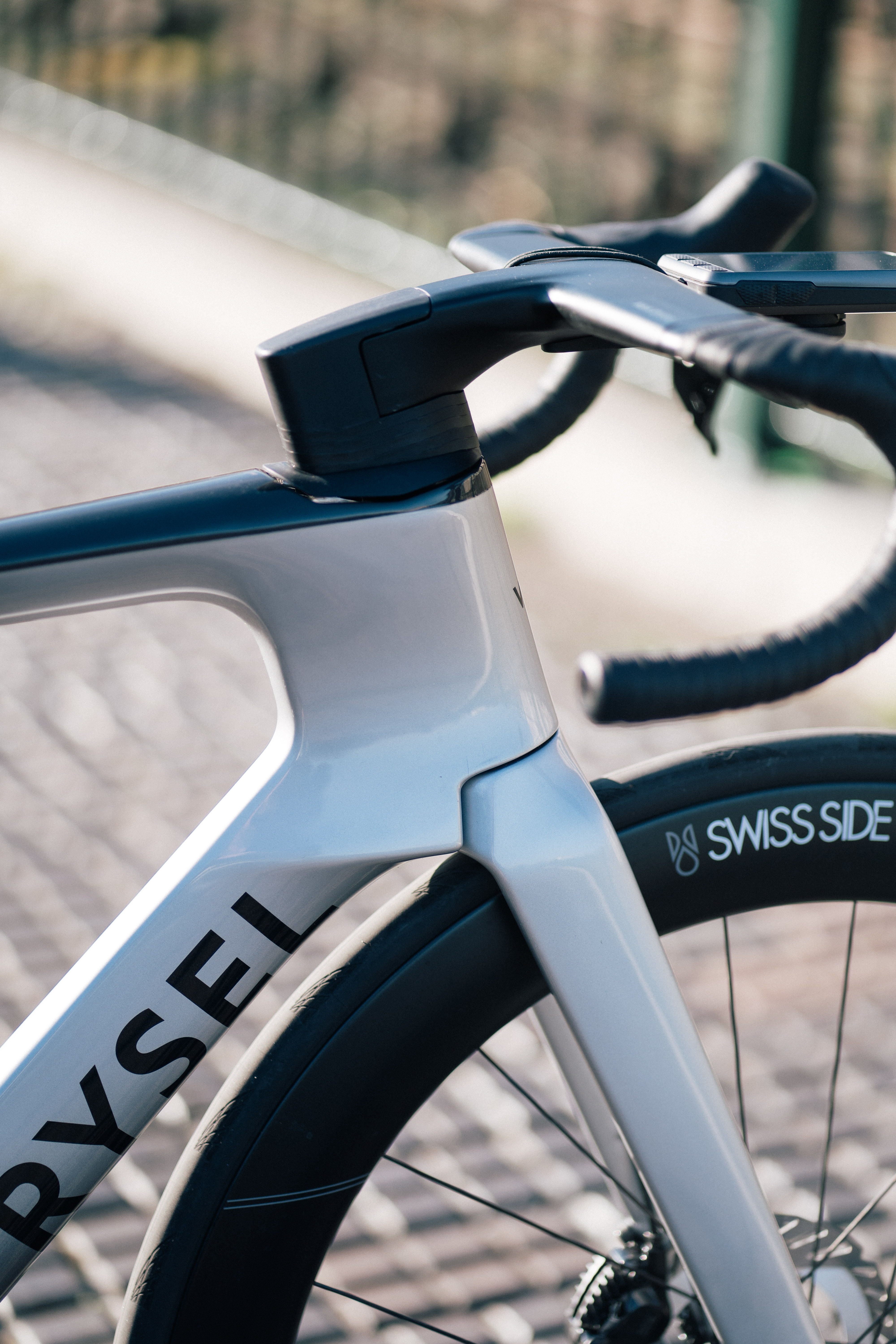
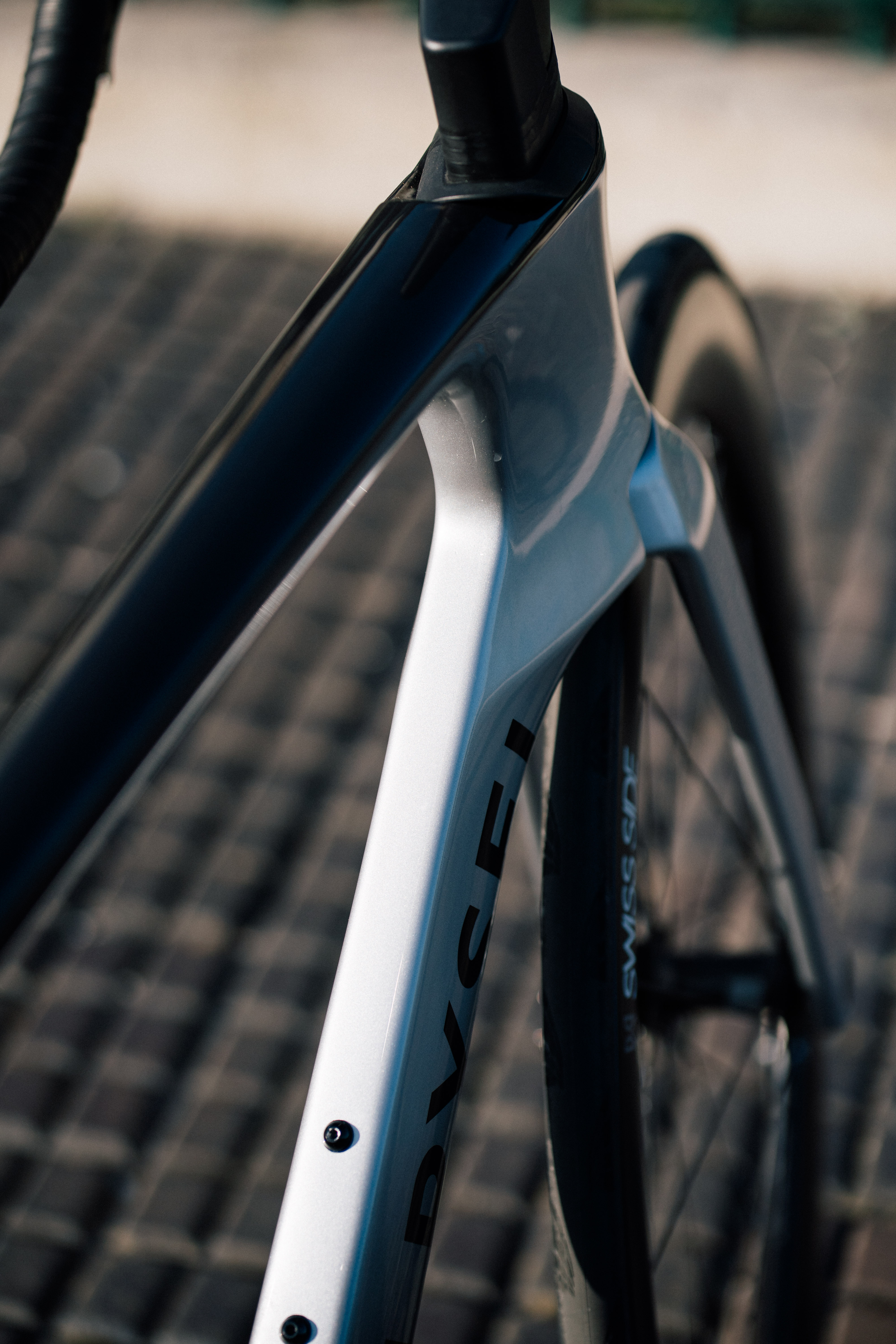
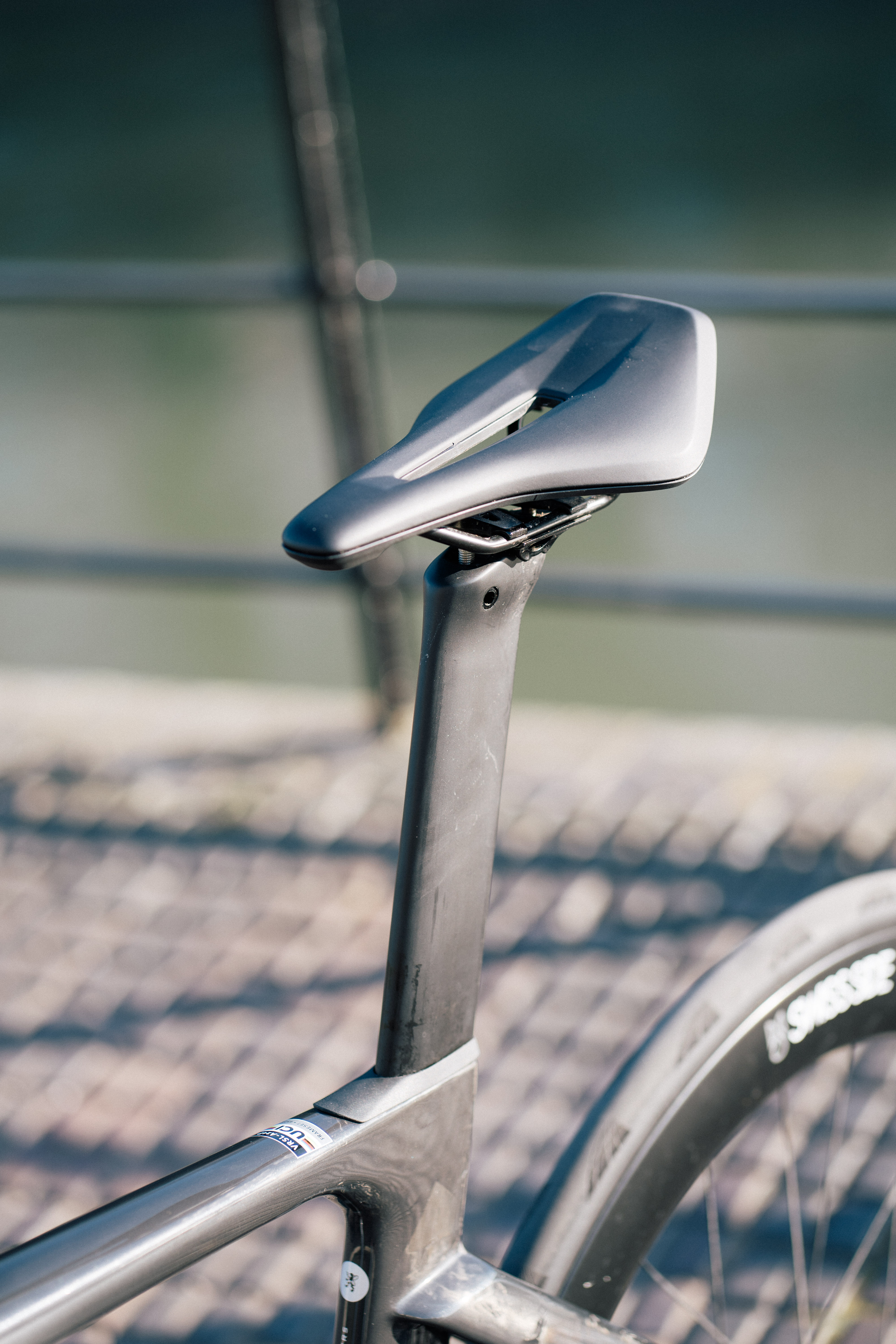
Performance
Putting aside the extremely low front end for a second, the Van Rysel RCR-F is absolutely ripping fast. On shorter blasts at max effort, it is ballistic. The low front end certainly helps here, forcing you into an aero position, as does the cockpit with its slight flare, but it’s also the fact that it’s clearly a very aero bike.
This is complemented by the wheelset, a 65mm deep front and rear setup from Swiss Side, shod with Continental GP5000 S TR tyres. For improved aerodynamics, the front is 25c and the rear is the more common 28c. This is certainly an improvement in terms of spec over the RCR I tested, but is in keeping with the 105 Di2 spec version of the RCR. We have concluded in our own lab tests that the GP5000 is the fastest road tyre, but a 25c on British roads with a front end this stiff is jarring, to say the least.
On flat and rolling terrain the RCR-F is pretty special to bomb around on. It is rocket-fast, and right at the cusp of being a little too stiff. The rear end isn’t so unforgiving that the rear wheel leaves the ground on all-out hill sprints, something the Dogma often suffered with, and while it is deep, the seatpost isn’t nearly so extreme (and vertical) as that of the Cervélo S5, which is somewhat unforgiving. If you want a bike that’s going to enable you to lock into a solo aero effort and encourage you to muscle over shorter rises then it’s really a great option.
It’s not got that whip-sharp feel of more all-round machines like the Dogma, especially compared to dedicated climbing bikes like the Canyon Ultimate. It’s no slouch uphill, and actually excels on shorter, really punchy ramps, but for protracted climbing, the package lacks that easy kick of acceleration you get from bikes at the UCI weight limit. In the round though, this is a faster option, as on the descents you will go faster. It’s also not like it’s a heavy bike, with my medium test unit clocking in at 8.53kg/18.8lbs without pedals or bottle cages, but with tubes in the tyres. To compare apples with apples a Dura-Ace spec is claimed to weigh 7.5kg, compared to the Factor Ostro VAM which clocks in at 7.2kg.
Despite having essentially the same geometry as the RCR Pro the Van Rysel RCR-F feels like a different beast on descents. Continental GP5000 S TR tyres help, but even when I swapped the wheels out to see how it fared with wider rubber it held true; the whole package feels a lot more ‘together’, for want of a better phrase. The RCR Pro I found to be a bit lacking in polish, whereas the RCR-F everything sings from the same hymn sheet. On descents - and I took it out to some world-class roads in Wales - it was excellent. Even at top speed it remained feeling stable and confident.
It is stiff though. I took it out for a 200km ride with plenty of climbing, and at the end, I was feeling quite beat up, and this is after swapping the wheels out for something shod with 30c rubber. You can fit bigger tyres, and if I was speccing it for myself I’d probably fit some lovely plush 32s, but that is because the slow decline of the nation means Britain’s roads have more in common with a lunar landscape than something designed for transit.
I do like the cockpit, that is definitely an upgrade over the RCR Pro. It’s narrower for starters, with my Medium bike coming with a set of bars that are 36cm c-c at the hoods, flared to 40cm at the drops, but it’s a stiffer setup that is far more adept at handling high wattage efforts. There’s enough real estate on the bottom of the drops to hang out there for long periods of time (if your spine can handle it) too, rather than forcing you up into the curve of the bars. The tops are deep. Like, really deep. Deep enough that none of my clip-on lights would fit, meaning I had to resort to slinging something beneath the included outfront mount.
This computer mount is injection moulded plastic and is perfectly capable of holding a small computer like the Wahoo Elemnt Bolt, but no more than that really. I tried it with the Wahoo Elemnt Ace and it was bouncing up and down so much I really didn’t have any faith it it long term. Even with a Bolt and a light it is very bouncy over rougher tarmac and, if you do buy one of these, I advise you to upgrade to something more solid like the CNC machined K-Edge units. That way you’ll be able to run proper lighting in a lovely clean setup without constantly worrying if the whole thing is going to snap and career down the road.
Finally, the Van Rysel RCR-F does include a power meter, even at 105 level. In my case, it’s a single-sided, left crank based INPEAK option, but alas, the charging cable didn’t ship with my test unit so I cannot pass comment on its reliability or accuracy with any great authority. Generally speaking, I think it’s a good thing that a bike with as racy an MO as this comes with a power meter as standard.
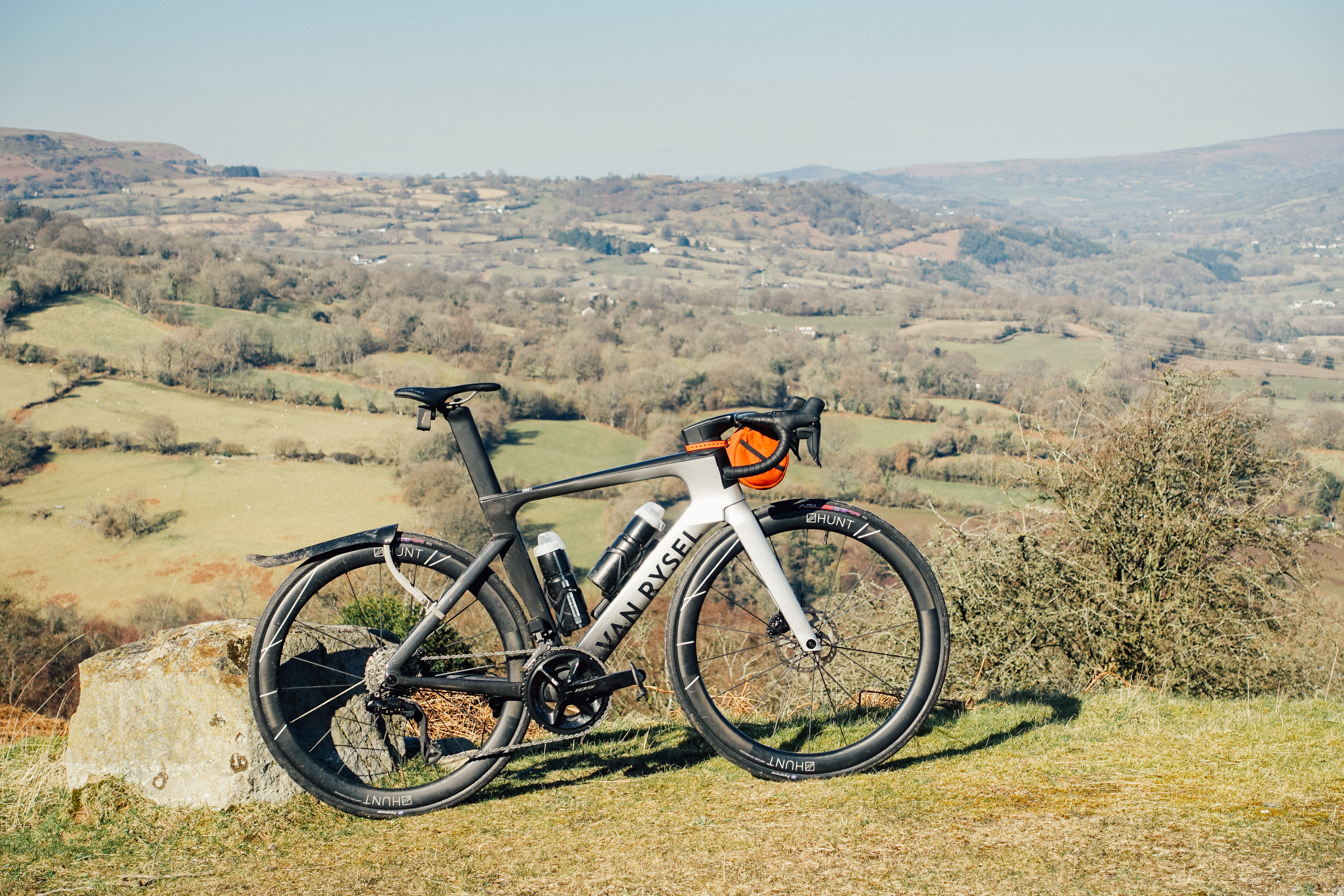
Value
My test bike with 105 Di2, which I suspect is likely going to be the most appealing of them to many of you, is priced at €5,499 / £5,000. It isn't available in the USA for now, so I can't give you it in bald eagle currency.
This price puts it in the same sort of bracket as other value-oriented aero bikes like the Ribble Ultra SLR, though here you get a better set of wheels (deep Swiss Side plays relatively shallow Mavics).
A sticking point here is that it's £400 more expensive than the Canyon Aeroad SLX 7, which is 105 equipped and comes with a power meter too. I think the Canyon is a better buy, not only because you get essentially the same package for less money, but I suspect it's also more likely to fit you.
The RCR-F, like the RCR, isn't actually that good value unless you start comparing the very top-spec builds. At the more consumer-friendly end of the spectrum, it's pretty middle of the road, offering much the same value (still pretty decent) as direct-to-consumer brands elsewhere.
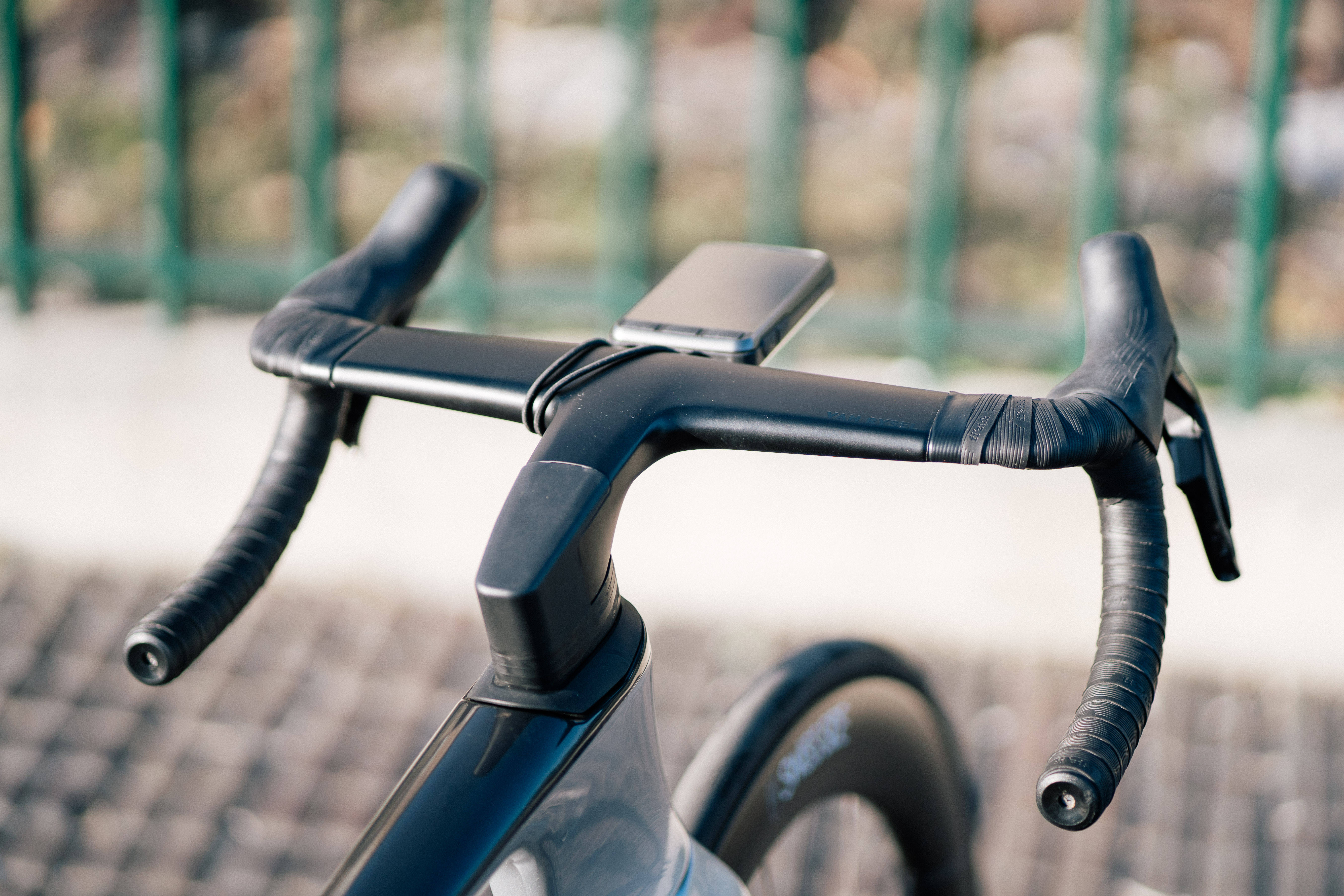
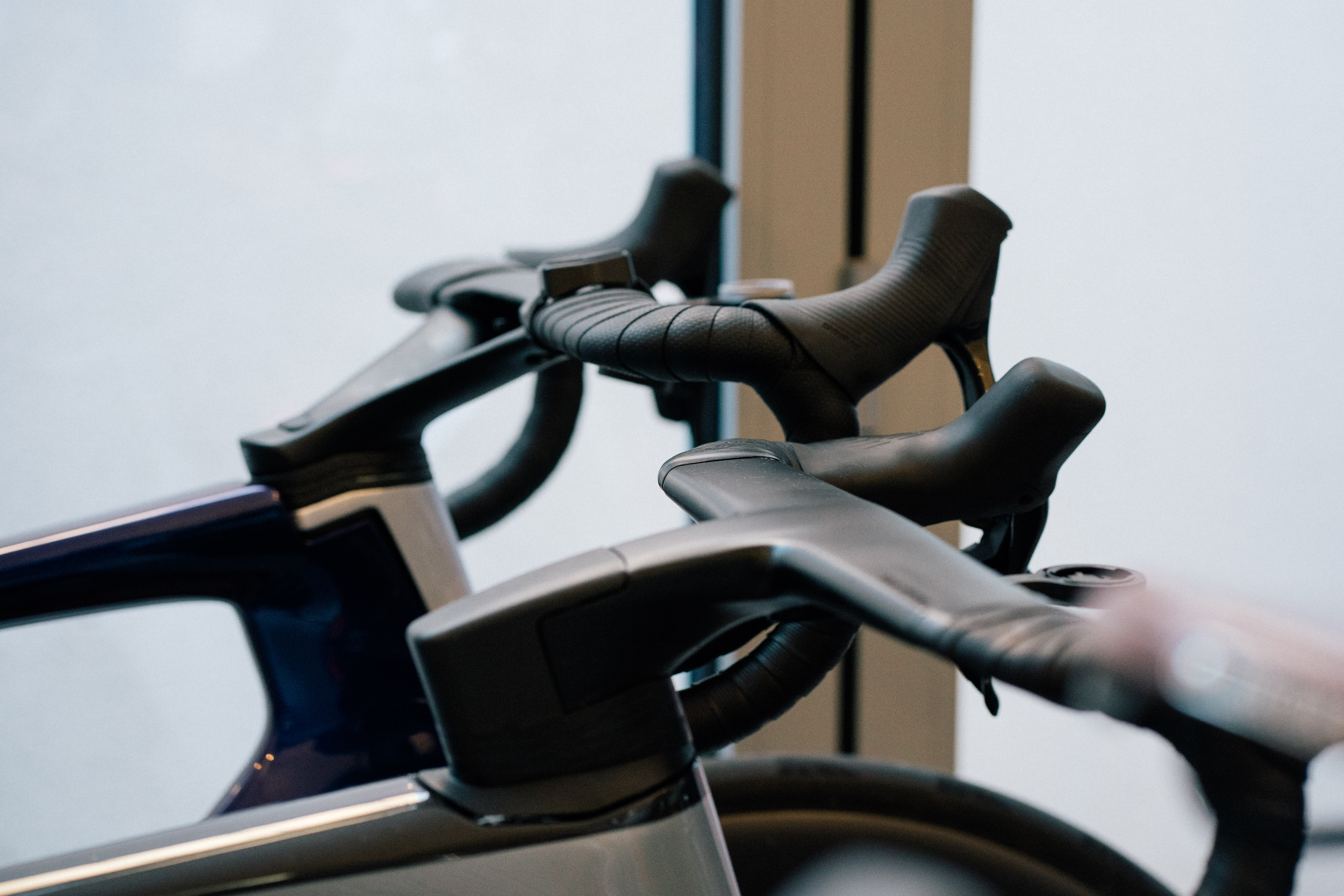
Verdict
While the overall score is lower than that which I gave to the RCR, I still think the RCR-F is a better bike, because I was (just) able to ride it. It's stiffer, faster, better put together, with a better build, but ultimately I don't think it's going to be a bike that suits many customers because of the low front end. This is echoed by Van Rysel itself, with it effectively saying it's just for racers.
The value proposition is decent but bested by the Canyon Aeroad. If this bike fits you and suits your needs I don't think you'll be disappointed by any means, but just make sure it fits first, please.
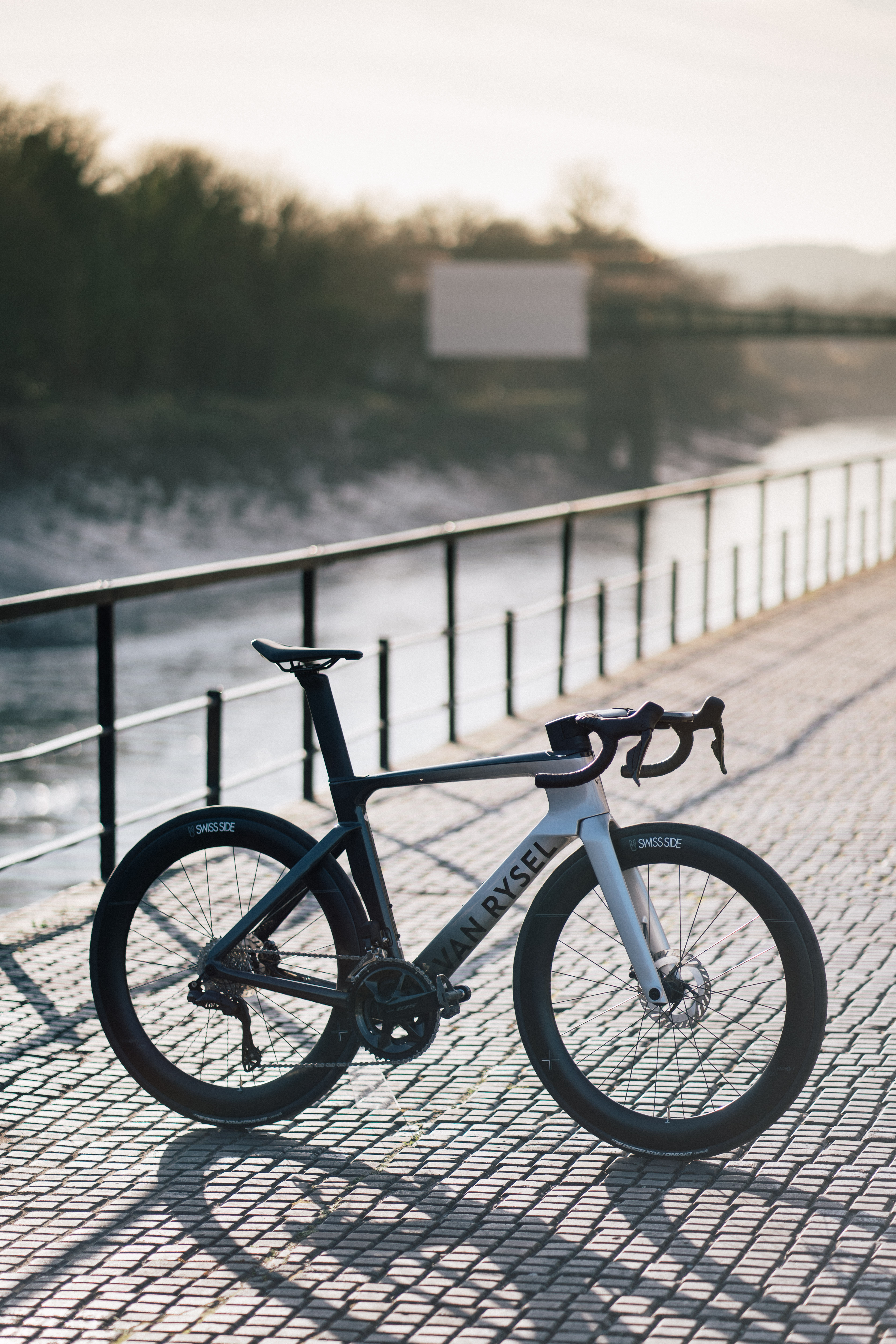
The full range
In addition to the 105 spec machine I've tested the following options are available, with SRAM equipped units to follow later.
- Ultegra Di2, Flow Purple paint (€6,499 / $7,999 / £7,000 / ¥46999.9)
- Dura-Ace Di2, pro replica (€9,499 / $11,999 / £10,000 / ¥69999.9)
- Dura Ace Di2 Signature (Raw frame, gloss laquer) (€9,499 / $11,999 / £10,000 / ¥69999.9)







